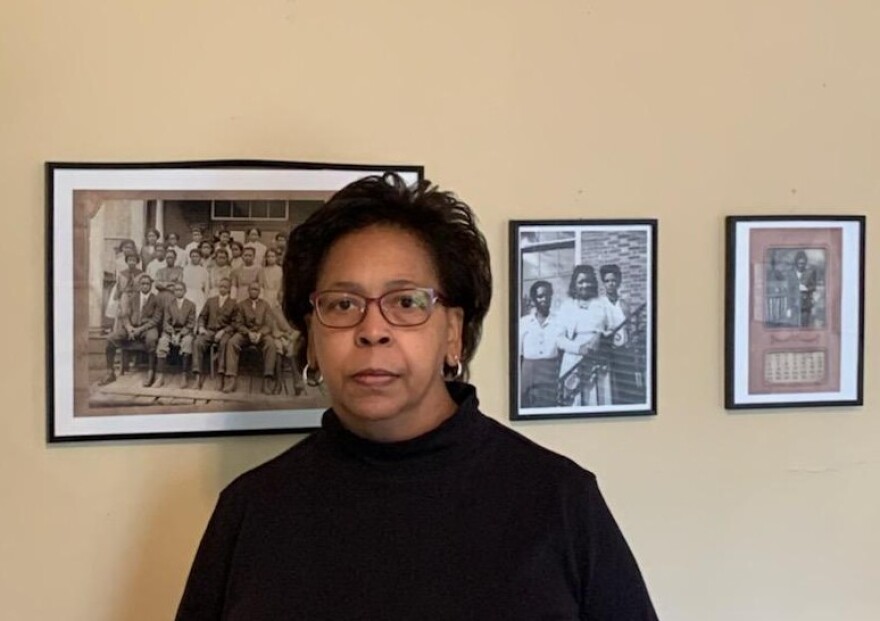In the late 1950s and early ‘60s, with funding from the Department of Housing and Urban Development, Harrisonburg declared eminent domain over homes and businesses in the Northeast section of the city. That included the area known as “Newtown,” where many formerly enslaved people made their homes, and where many of their descendants still lived. In the first of a two-part report, WMRA’s Randi B. Hagi has the story.
If you go around asking about racial history as it relates to housing in Harrisonburg, inevitably, the following phrases will come up.
STAN MACLIN: Project R4.
KAREN THOMAS: Knocked on people’s doors and told them they were taking their land.
RUTH TOLIVER: The fiasco better known as “Urban Renewal.”
The “Harrisonburg Northeast Urban Renewal Project R-4,” as it was formally referred to in city documents, and its smaller tag-on, Project R-16, changed the fabric of the town’s black community. The Harrisonburg Redevelopment and Housing Authority, which now runs three subsidized housing complexes and distributes Section 8 housing vouchers, was initially established in 1955 in order to execute the project.

STAN MACLIN: But I like to call it “Urban Removal,” because it was where cities declared urban areas as slums, and they received federal dollars to come in there and to literally displace and replace area residents … to rebuild new housing.
Stan Maclin, who runs the Harriet Tubman Cultural Center in Harrisonburg, learned about this local history when he moved here 20 years ago.
MACLIN: There were several businesses that was in the area. The Colonnade, pool halls, restaurants, they just never came back.
To justify an urban renewal project, municipalities had to identify areas of “urban blight,” or slums, to be eligible for federal funds. They could then take the properties through eminent domain and clear the land for redevelopment. But the area defined in Project R-4, bounded by North Main, Broad, Johnson, and Rock streets, contained homes and apartments of a wide range of value. Many rental properties had outdoor toilets, and tenants had to do their own home repairs.

RUTH TOLIVER: And see this was so close to Main Street, that the well to do whites … certain ones, they wanted to get this area cleaned up … and they wanted to move the blacks into an area where they could not be seen easily.
But author and retired teacher Ruth Toliver, who grew up spending summers in Harrisonburg, remembers other homes as well –
TOLIVER: These were the homes which could never be described as blighted or slums. They just happened to be in the way of progress. These were the homes with the manicured lawns, well-tended flowers, and in some cases, the wrap around porches.
Many of the aforementioned rental properties were owned by a few landlords, including the Klingsteins. Between 1960 and 1963, the Klingsteins sold 14 parcels to the housing authority. This included 26 housing structures and a few commercial buildings in the R-4 area, many of them along Federal Alley, and additional properties in the R-16 area. All told, the Klingsteins were paid close to $150,000 for these properties.

KAREN THOMAS: Not very many people owned their own homes, but the homes that they lived in, they took care of them as their own. Because the landlords back at that time … really didn’t take care of their homes. They didn’t remodel, they didn’t fix things. So the residents that lived in those homes took care of them as their own.
Karen Thomas, president and founder of the Northeast Neighborhood Association, said her family was one of many who lived in a Klingstein rental.
THOMAS: My family, they had came from Grottoes, Va., to come to Harrisonburg, because, you know, to them, it was the city and that’s where all the jobs were. But when this happened, they lived in … a house that was not theirs, owned by Klingstein. And they ended up moving back to Grottoes, back to family.
Ruth Toliver and her sister spent summers with their grandmother in Harrisonburg, where she met her husband, Lowell Toliver.
TOLIVER: For us, summers were the time that we were footloose and fancy-free, and Harrisonburg was one of those places where you were safe. We rode our bicycles all over town, and everybody knew everybody.
In Toliver’s book, Keeping Up With Yesterday, which is part memoir, part genealogical research, she recounts the evening her husband’s childhood home, which his father had built, was destroyed.
TOLIVER: We were at the new home on Myrtle Street when my husband, Lowell, came in and said he had just come by Mason Street and saw the original home place being torched. A silence permeated the home as though a family member had died. We could smell the burning no matter where we went in the house … The home they had all worked so hard for was no longer there – replaced later by an auto parts store – all in the name of progress.
For Toliver and many others, the pain of that destruction still can be felt.
Part Two of this report will further explore the modern-day legacy of those projects.
Editor's note, August 13, 2024: the audio version of this report has been updated.


